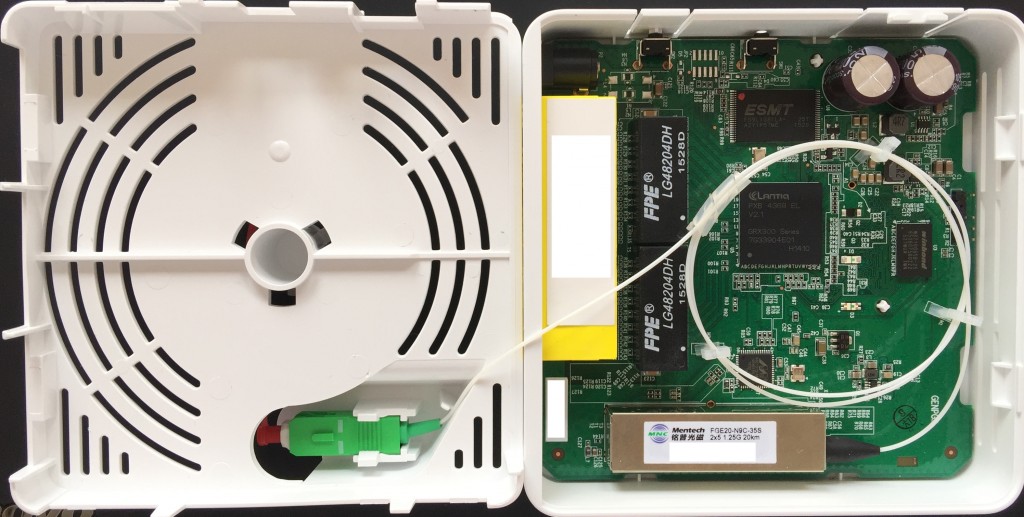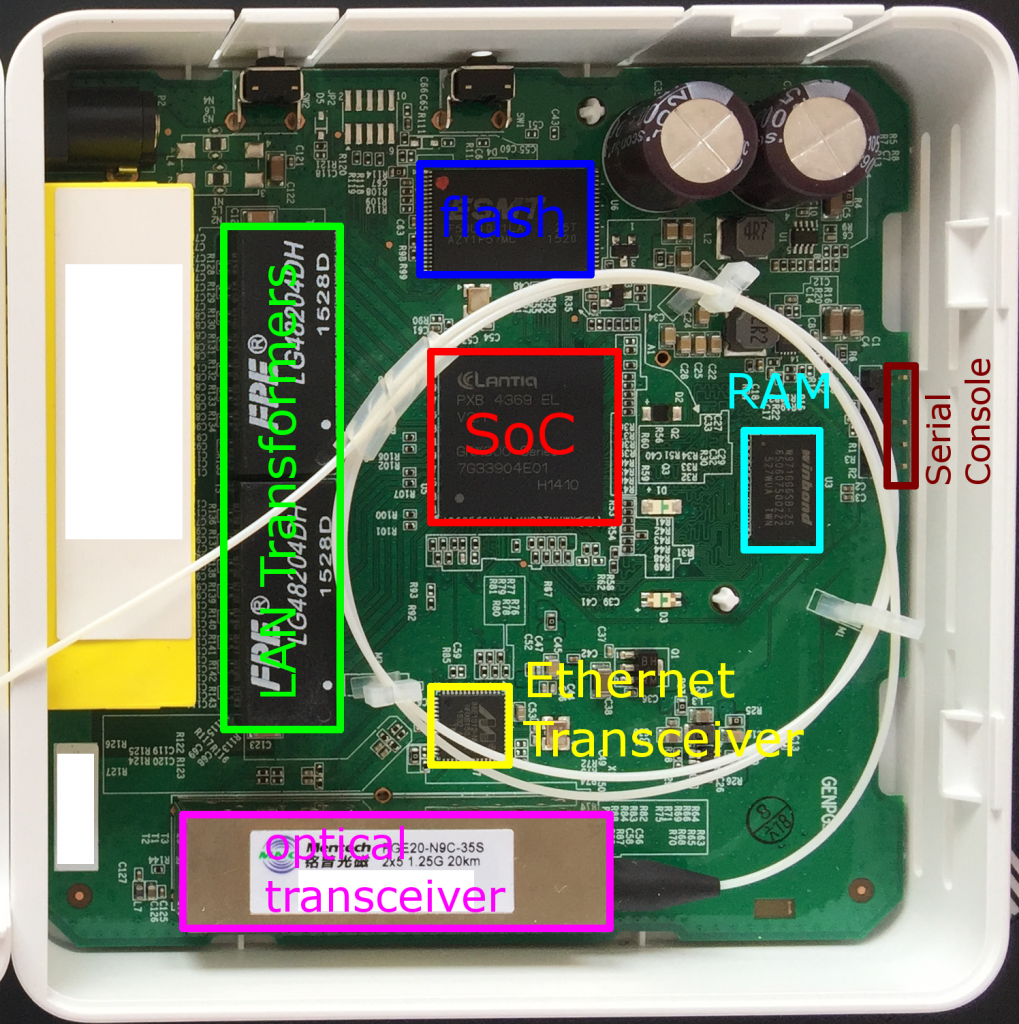By chance I got an early hands-on on a fiber network terminator (NT)/broadband gateway (such a device will soon be installed for my FTTH line provided by “Deutsche Glasfaser.”) I don’t know how it happened, but it suddenly fell apart, so I had a brief look under the hood… 😀

The SoC is a Lantiq PXB 4369 EL V2.1 (GRX300), which is a Gigabit Ethernet Router/Gateway SoC with int. 2×2 WiFi. There aren’t any antennas, though, and it seems you can’t add any either. The device is from the GRX 300 series, which is a “CPE Network Processor with integrated WiFi.”
A Russian web site states that its actually the GRX369 series, and that the SoC is clocked with 600 MHz. (Update: The CPU is a MIPS 34Kc V5.6 clocked at 600 MHz, 397.82 BogoMIPS.)
The device can be simply twisted on the wall junction box which is the provider’s fiber hand-over point (“fiber management unit,” FMU.)
On the WAN side we have a Mentech FGE20-N9C-35S as the optical transceiver module (2×5 form factor) for single-mode fiber in passive optical networks (PON). Optical wavelength division multiplexing (WDM) is used so a single fiber can be used for both downstream and upstream data. The maximum data rate this transceiver can handle is 1.25 Gbit/s (which suggests we’re talking EPON, 802.3ah-2004 here…). The reach without intermediate amplification is 20 km(!). Wavelengths of 1,310 nm (upstream)/1,490 nm (downstream) are used.
For LAN connectivity the gateway has 4 Gigabit Ethernet ports, driven by two FPE LG48204DH 2-port LAN transformer modules in a DIP-48 package.
The transceiver is a Marvell 88E1512-NNp2 out of the “Alaska” series, 10/100/1000 BASE-T single-port PHY (so it seems that all fiber/Ethernet ports are on the same switch), supporting Energy Efficient Ethernet (EEE) and Advanced Virtual Cable Tester functionality.
Update: The switch seems to be a Lantiq VRX318 (or compatible).
Firmware is stored in a Elite Semiconductor (ESMT) F59L1G81LA-25T single-level serial (SPI) NAND flash chip in a TSOP48 package. It operates with 3.3V at a clock of 25 ns and has a flash density of 1 Gbit and a bus width of 8 bits. The total memory size is 128 MByte.
RAM is provided by a Winbond W971GG6SB-25 chip, which is a DDR2-800 (5-5-5) SDRAM chip with a size of 128 MByte, operating at transfer rates of 800 Mbit/s per pin with a power supply of 1.8 V. (Update: The RAM is actually clocked at 300 MHz.)
It seems that the broadband gateway is equipped with a serial-console connector.
Here’s another photo that shows where the key components are located:

Please let me know if this in any way helps you, or you can contribute to this post.